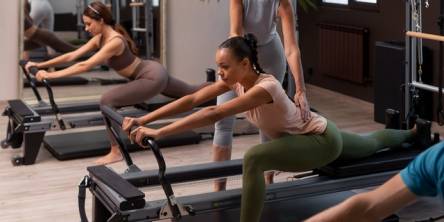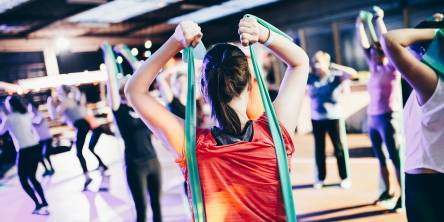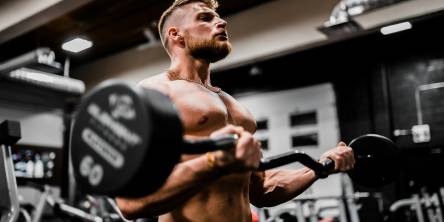The Truth About the Differences Between Muscle Mass and Fat

Obesity is a growing concern because it is directly linked to a number of serious conditions such as diabetes and cardiovascular disease. Even though many people make a serious effort to change their eating habits while increasing their physical activity, only a few states have seen a decline in obesity within their respective populations. The sad part is, that there is a huge body of information out there that leads people down unhealthy paths, and much of this can be cleared up with a bit of common sense.
Muscle Weight vs. Fat Weight
The notion that a kilo of muscle weighs less than a kilo of fat often brings a smile to students at nursing schools such as at Bradley University where nurses study to become family nurse practitioners. A pound is a pound, after all, which is the reason for the chuckle, but what is really going on is that there is a difference in mass. Fat takes up more space than the same quantity of muscle, so a person with lean muscle mass weighing the same as a person with an abundance of fat, at the same height, would look thinner. That’s the truth.
Muscles Burn More Calories than Fat at Rest
Physiologically speaking, a person with 25% of their body weight in fat would burn more calories than a person with 45% body mass in fat. As a result, a person with more muscle would begin burning more calories to keep their systems running. A person with a greater amount of fat stored has plenty to call upon, so there is no urgency.
Remember, fat is stored as an energy reserve in times of famine, so no triggers are sent to start burning fat, as they would be in a leaner person with more muscle mass. It’s odd how the human body sends its own triggers based on survival and genetics, but this is a basic truth. A person with greater muscle mass burns more calories pound per pound than a person with a higher percentage of fat.
Almost Half of All Adult Americans Get Inadequate Activity
Finally, most people who ‘think’ they are getting sufficient activity to maintain a healthy BMI are actually not getting the amount of activity they need. According to the State of Obesity website, at least 80% of Americans don’t meet the nation’s recommended amount of aerobic activity and at least 45% don’t get sufficient exercise necessary for good health. It is recommended that adults need to be doing at least 150 minutes of activity each week. This can be as simple as going for a 30-minute walk each day, or going to a 60 minute exercise class three times a week. Other research has shown that 75 minutes of exercise may also be enough if that exercise is of a higher intensity. It is advised not to do all this exercise in one day.
This is one of the reasons why those same FNP students mentioned above who are studying in the Bradley University Online program are counseled to take time away from their computers daily. Yes, they may work on a busy floor of a hospital, but that isn’t the kind of activity for optimal health. Aerobic exercise doesn’t factor in, nor does strength conditioning. If you want to stay healthy with a lower BMI, take the time to work out regularly. As you begin to reverse the fat to muscle ratio, your body will even help you burn more calories at rest. Remember, healthy eating, supplements as needed, and increased activity will keep you healthier longer.
Similar Articles
Stepping into a Pilates studio for the first time can feel both exciting and overwhelming. With various equipment, different class styles, and a focus on controlled movements, it’s important to know how to make the most of your experience. This blog will share practical ways to enhance your pilates studios experience.
Fabric resistance bands have gained popularity as versatile fitness tools, but their potential extends far beyond the gym. Made from durable, stretchy fabric, these bands are designed to provide resistance during exercise, helping to strengthen muscles and improve flexibility.
Making big lifestyle changes can feel overwhelming, but small daily movements can have a significant impact on your overall well-being. You don’t need intense workouts or drastic adjustments. Simple, mindful movements throughout the day can boost your energy, improve your posture, and reduce stiffness.
Boost your health and happiness with daily exercise. Improve heart health, reduce stress, and stay fit with simple, effective workout tips. Start today!
Learn how to choose the best commercial treadmills to boost durability, performance, and client satisfaction for your fitness facility's success.
Selecting the best workout clothes for your workout routine to enhance your comfort level, performance and style while doing exercise. For your better workout experience, choose the workout clothes and the well chosen clothes can improve mobility, wick away sweat and help to regulate body temperature
Boost your gym confidence with the right wardrobe. Discover why gym track pants and essential apparel are key to comfort, style, and peak performance.
The goal of 10,000 steps a day has long been identified as a key to better health and wellness. A few years ago, I was able to maintain a six-month streak of hitting 10,000 steps daily.
Going to the gym is a fantastic way to stay fit, relieve stress, and maintain a healthy lifestyle. However, the gym is a shared space, and how you behave can significantly impact the experience for others. Understanding and practising good gym etiquette ensures a positive workout environment for everyone. Here's a comprehensive guide to help you navigate the dos and don'ts of gym etiquette.









